Climate Action and the Case for Voter Engagement
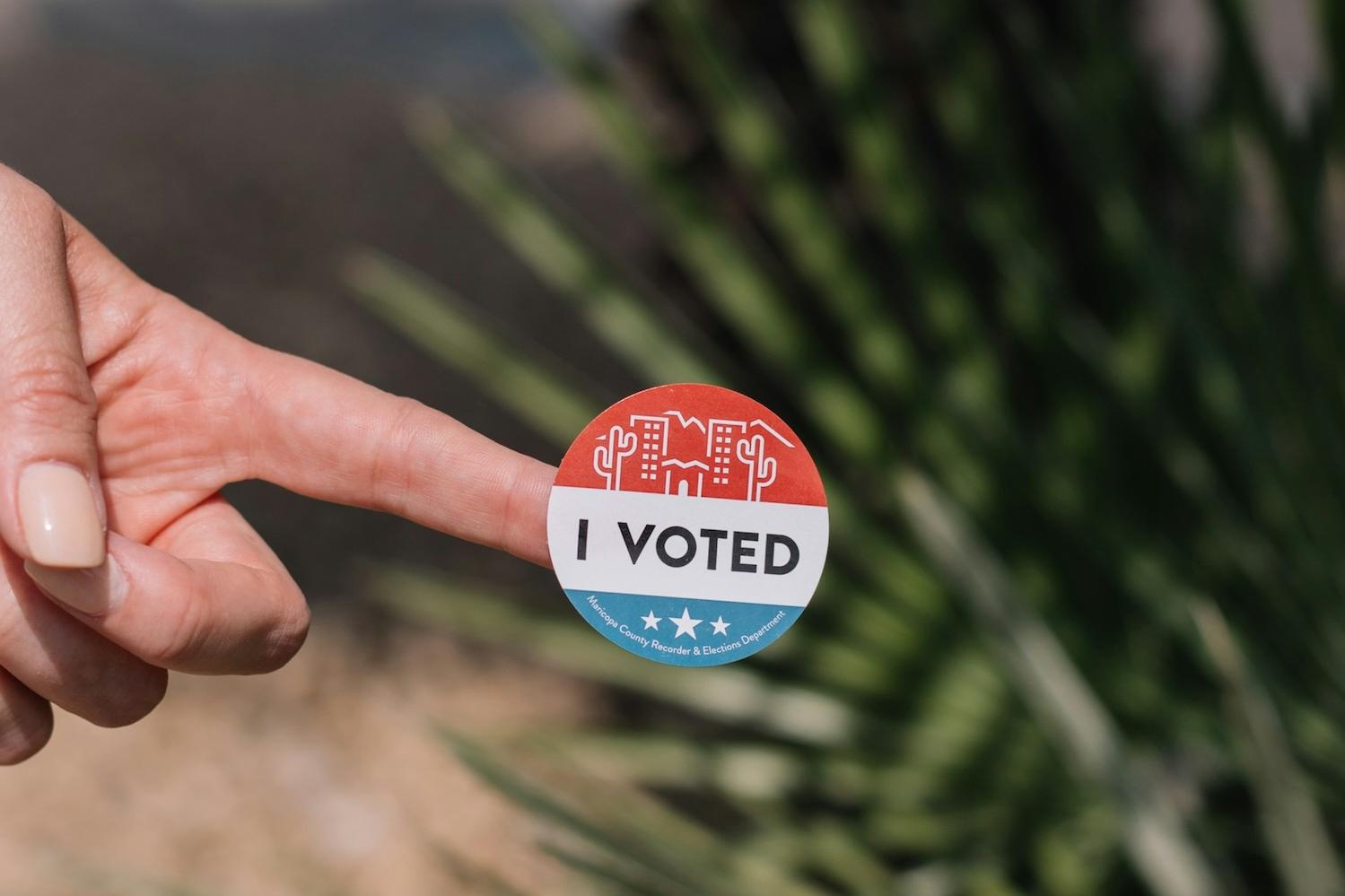

(Image: Phillip Goldsberry/Unsplash)
Business leaders who support voting rights face a difficult challenge. Aside from overcoming new partisan laws that make voting more difficult, they need to overcome a chronic undercurrent of voter apathy in the U.S. However, now that communities in many parts of the country are feeling the impacts of climate change firsthand, voting rights supporters have a new opportunity to engage voters and encourage them to choose leadership on climate action.
On climate action, who's elected matters
“It makes no difference who is elected president,” is the reason cited by 53 percent of voting-age adults who decided not to cast a ballot in 2020.
In terms of the climate crisis, though, the differences are all too real. Former U.S. President Donald Trump changed the game with one stroke of the pen shortly after taking office when he summarily pulled the U.S. out of the landmark Paris Agreement on climate change.
U.S. business leaders quickly allied with labor unions to advocate for the Paris Agreement and reaching net-zero greenhouse gas emissions by 2050. Ongoing federal programs also continued to support progress on decarbonization, despite the efforts of Trump appointees to the contrary.
Still, without strong White House support for climate action, the U.S. lost a key opportunity to provide global leadership at a time of looming crisis.
“While the US now represents around 15 percent of global greenhouse gas emissions, it remains the world's biggest and most powerful economy,” BBC environment correspondent Matt McGrath observed in November of 2020. “So, when it becomes the only country to withdraw from a global solution to a global problem, it raises questions of trust.”
The leadership pendulum swings both ways
That trust cannot be restored in a single election cycle, but the current administration took a giant step in the right direction. Newly elected President Joe Biden took office in 2021 with a focus on leveraging government resources and private-sector investment to accelerate decarbonization.
In a new analysis, Carbon Brief credits President Biden with implementing new policies that bring the U.S. closer to meeting its near-term goal to halve greenhouse gas emissions by 2030, highlighted by climate provisions in the 2021 Bipartisan Infrastructure Law and the 2022 Inflation Reduction Act.
In the analysis dated March 6, Carbon Brief notes that the Joe Biden administration has brought the country “close to meeting its 2030 target range.” If Biden is reelected in 2024, "emissions would fall to around 43 percent below 2005 levels” by 2030, Carbon Brief projects, though existing policies fall short of where the country needs to be to reach net-zero two decades later.
Conversely, the alternative — a second term in office for Trump — would once again turn back the clock: “In total, the analysis suggests that U.S. greenhouse gas emissions would fall to 28 percent below 2005 levels by 2030 if Trump secures a second term and rolls back Biden’s policies — far short of the 50 to 52 percent target."
By way of visualizing the difference, Carbon Brief projects that Trump’s second term in office would wipe “all of the [emissions] savings from deploying wind, solar and other clean technologies around the world over the past five years” off the books, twice over.
Rolling back the Inflation Reduction Act would have catastrophic consequences
Though advising that other variables may impact the actual results, Carbon Brief anticipates a negative outcome for a second Trump term based largely on his pledge to roll back the Inflation Reduction Act (IRA).
“The IRA accounts for the most significant part of the emissions reductions expected as a result of Biden’s climate policies to date,” Carbon Brief authors led by deputy and policy editor Simon Evans explained. “This has been called the largest package of domestic climate measures in U.S. history.”
“It offers incentives covering a broad swathe of the economy from low-carbon manufacturing to clean energy, electric vehicles, ‘climate-smart’ agriculture and low-carbon hydrogen,” they added. “Regardless of the precise impact, a second Trump term that successfully dismantles Biden’s climate legacy would likely end any global hopes of keeping global warming below 1.5 degrees Celsius."
The shield of apathy may be cracking
A newly published study from the University of Colorado at Boulder indicates that climate change already impacts voter behavior, providing some basis to believe that the Inflation Reduction Act — and President Biden — will prevail for another four years.
“We find that climate change opinion has had a significant and growing effect on voting that favors the Democrats and is large enough to be pivotal to the outcomes of close elections,” the researchers concluded. “We project that climate change opinion probably cost Republicans the 2020 presidential election, all else being equal."
Signs of growing voter engagement emerged in the 2022 midterm elections as well. Business leaders who value both the environmental and the bottom-line benefits of the IRA can help make sure that it survives into 2025 and beyond by seizing the momentum, building on their voter registration programs, and keeping climate action front and center in the national conversation as Election Day comes closer.
Growing "Food and Futures": Vertical Harvest Serves Its Community in More Ways Than One
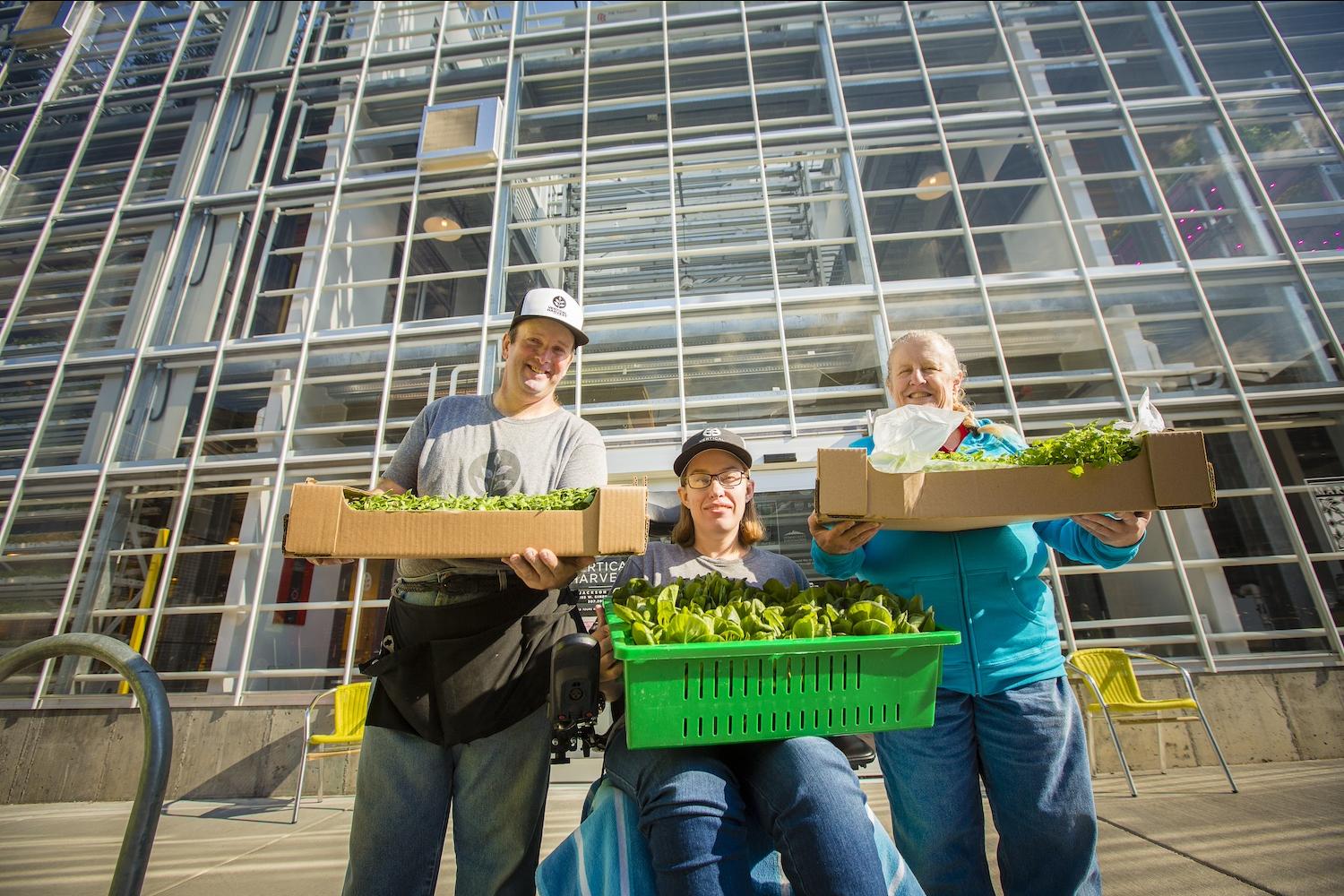

Employees outside of Vertical Harvest's greenhouse in Jackson Hole, Wyoming. (Image courtesy of Vertical Harvest)
“The way we farm and distribute food is a social justice issue, a public health issue, and an economic resiliency issue,” Nona Yehia said.
Yehia is the co-founder and chief executive officer of Vertical Harvest, a company that aims to be an all-in-one solution to these overlapping issues. Not only does the Wyoming-based company provide local, fresh, nutrient-dense produce year-round, but it also provides meaningful work for people with developmental disabilities, who are often confined to low-wage, part-time roles.
During the 2008 recession, there was limited work available for Yehia. She is an architect by trade and decided to use her newfound time to focus on the needs of her community in Jackson Hole, Wyoming. With her co-founders Penny McBride and Caroline Croft Estay, the team identified two seemingly unrelated voids to fill: year-round fresh produce in a place with a four-month growing season, and a job market for people with developmental disabilities.
They set out to address the question: “How could we grow as much food, employ as many people as possible, and do both year round?”
The answer? Vertical Harvest.
The team found a small piece of property — just a tenth of an acre — that they leased from the town to build a greenhouse and start a hydroponic, vertical farm. For this method, the crops are grown in a mix of water and nutrients instead of soil, and the rows are stacked on top of each other instead of spread out over a field. It uses much less land and 85 percent less water than traditional farming methods. And because the crops are grown in a greenhouse, the team can control environmental factors like temperature and moisture levels to cultivate high-quality produce all year.
Today, that tenth of an acre produces up to 100,000 pounds of produce each year.
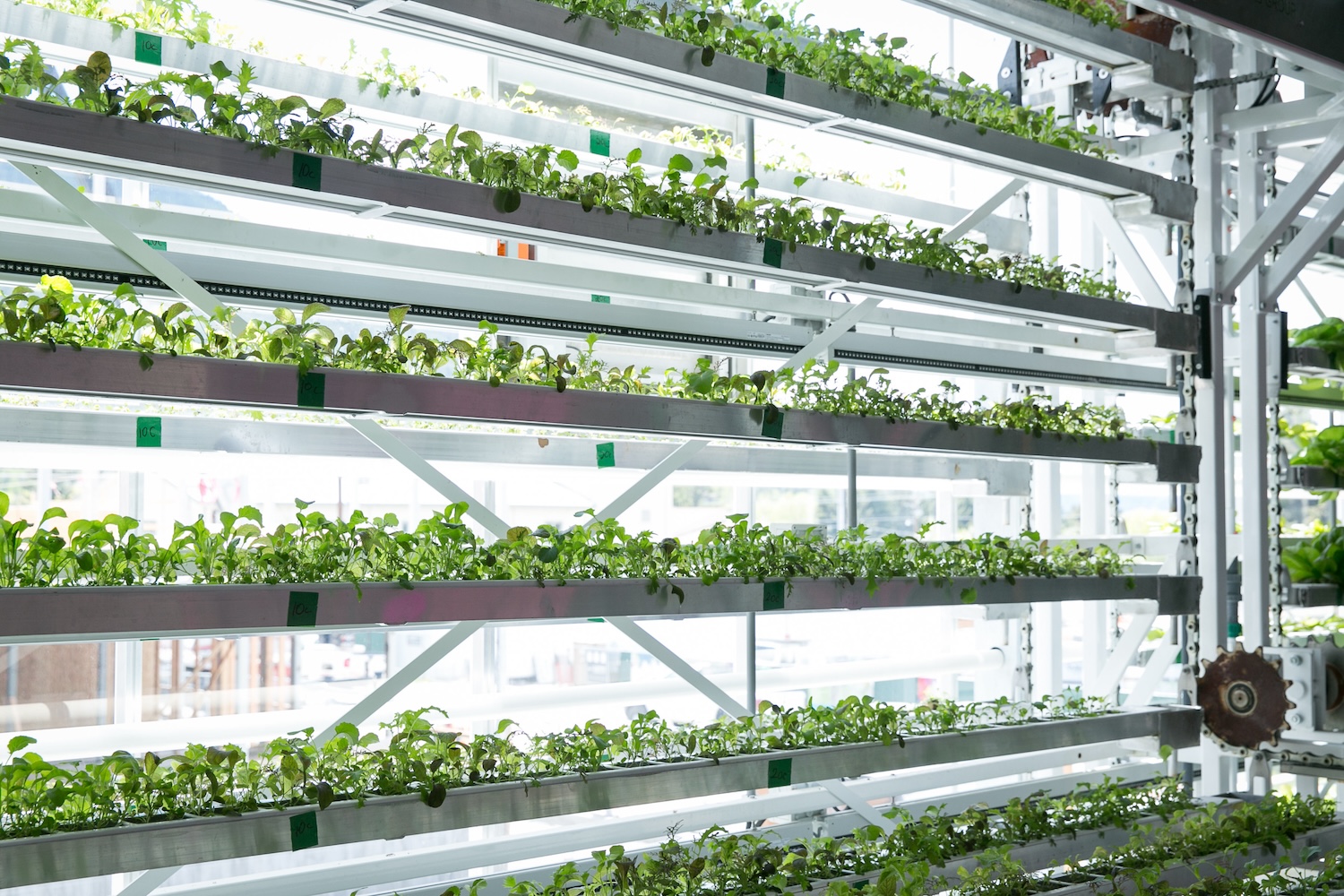
Fifty percent of the U.S. land base is already used for agriculture, and most fresh produce in the U.S. travels over 1,500 miles before being consumed. With Vertical Harvest, consumers get food that was growing just 24 hours before it's on their plate.
For the last seven years, Vertical Harvest has provided Jackson Hole and surrounding communities with fresh microgreens, lettuces and tomatoes. It not only saves on carbon emissions from food transport, but also helps bolster the local economy.
In 2023, the unemployment rate for people with disabilities in the U.S. was 7.2 percent — about double the general unemployment rate. Vertical Harvest employs 50 people, 40 percent of whom identify with some sort of disability. By employing a sector of the population that generally faces steep barriers to meaningful work, those with developmental disabilities, Vertical Harvest brings more jobs to a wider range of people in the community.
“We have really tried to understand how we create a context where everybody learns together and everybody trains together,” Yehia said.
Vertical Harvest uses what they call the “Grow Well” model, a customized employment method that tailors the individual to the job and the job to the individual. Because of the investment they put into training and retaining their employees, they have an extremely minimal employee attrition rate, Yehia said. That further bolsters the company culture and saves a lot of money that other companies tend to sacrifice to staff turnover.
“That’s a mindset and an approach that builds our entire culture,” she said. “People with disabilities in our town are not only farming the most valuable commodity to any community — fresh, nutritious food — but they will be our leaders and teachers of tomorrow, as we build farms across the country.”
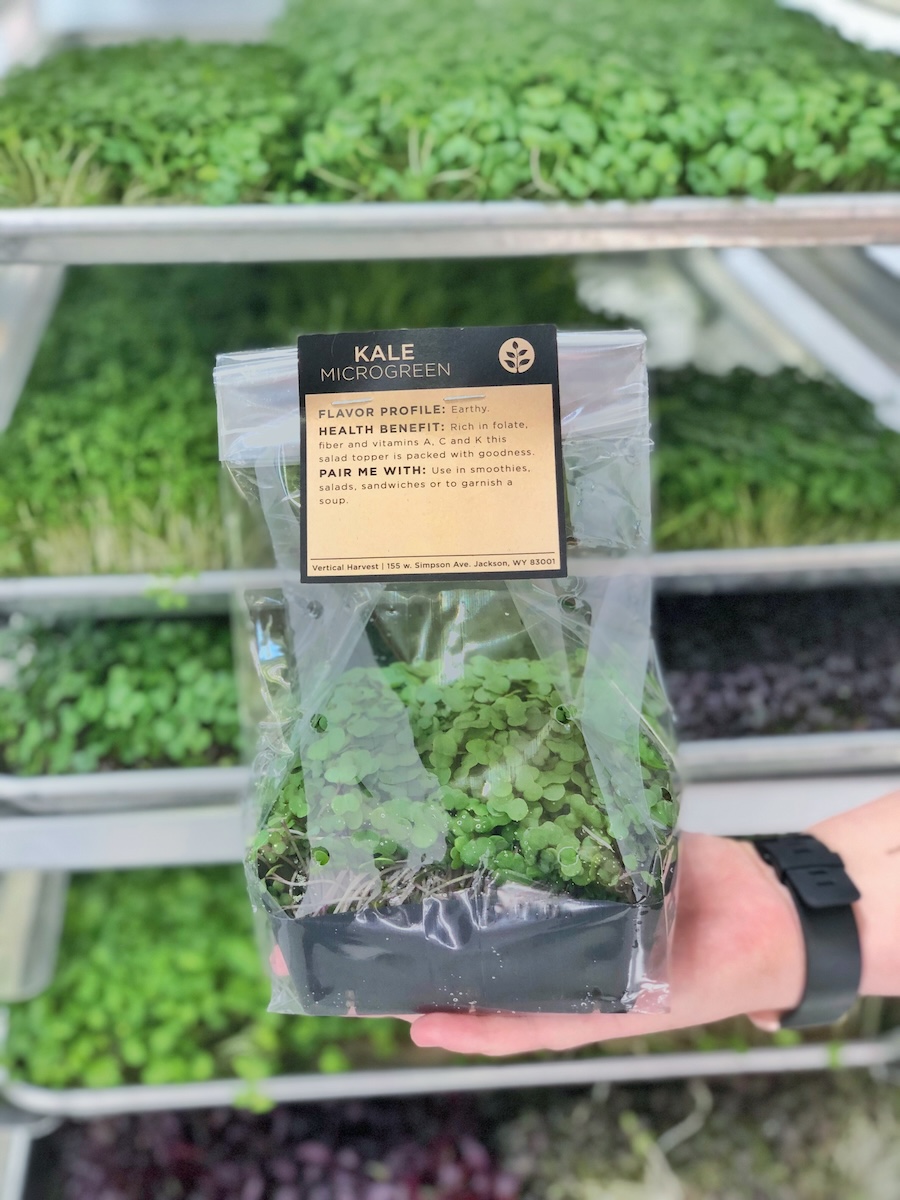
As of now, Vertical Harvest is set to expand to two locations: Westbrook, Maine, and Detroit, Michigan. But the team gets interest every day from municipalities across the nation looking to gain this sort of environmental, social and economic boost to their communities.
“We see ourselves as a food and jobs movement,” Yehia said. “No one can argue with food and jobs. And municipalities are always finding ways to increase the sustainability of the communities in which they lead.”
This Initiative Reduces Recidivism by Teaching Incarcerated People to Code
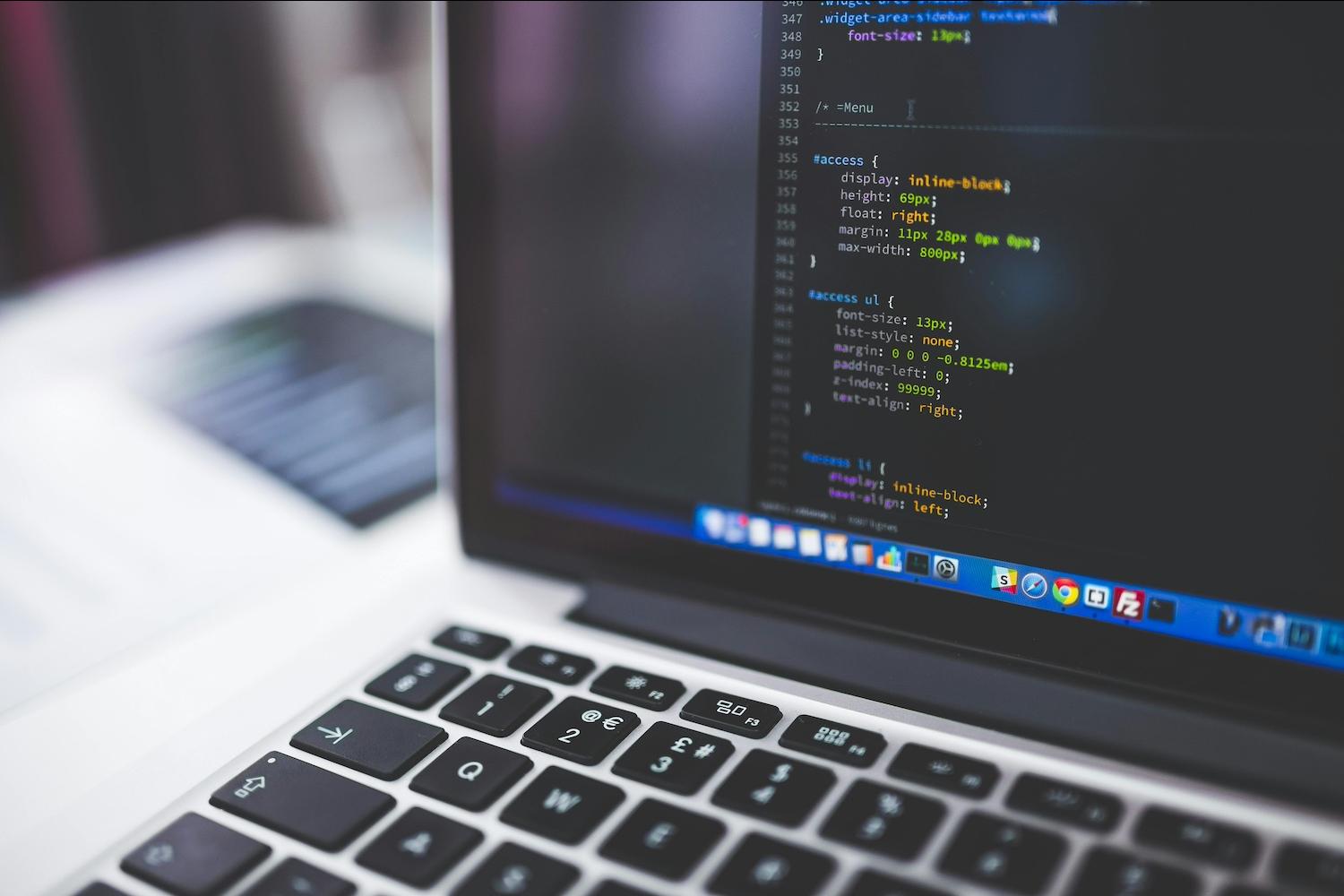

(Image: Negative Space/Pexels)
When Dirk Van Velzen founded the Prison Scholar Fund while incarcerated in 2006, he dreamed of the chance to gain a college education during his sentence to prepare him for a new life upon his release. Now, the fund makes Van Velzen’s dream a reality for other people who are incarcerated by giving them opportunities to further their education and gain professional development skills that will help them find a job.
While it can be hard to find employers who hire people with criminal records, the ever-expanding tech industry is creating opportunities for formerly incarcerated job seekers, Van Velzen said. The fund collaborates with Colorado Technical University’s Coding Dojo to help prepare them for careers in tech.
“Since a lot of the computer programming work can be done remotely, that kind of opens the door for ‘riskier’ candidates,” Van Velzen said. “On top of that, the computer industry is kind of the Wild West for employment. Small startups just need software engineers.”
Van Velzen identified mid-level technology companies and successful startups as a burgeoning potential job market for people who were formerly incarcerated.
The coding boot camp
Van Velzen first founded the Prison Scholar Fund to address funding gaps in educational programming for people who are incarcerated. He envisioned offering computer science and coding programs well before his release in 2015, but the lack of computer access in prisons made this idea a non-starter. Nonetheless, the fund served 110 people in 24 states by the time of Van Velzen’s release, demonstrating the need for such a program.
Van Velzen revisited the coding idea in 2021 and reached out to Seattle-based coding companies. Coding Dojo was supportive of the plan, but COVID-19 protocols prevented educators from conducting a coding boot camp inside prisons. So, the program was adapted to be offered to people scheduled to be released.
The inaugural class
Since the requirements for completing the program were so rigorous — involving 10 to 12 hours of classwork per day for 14 weeks — the team was quite selective when choosing students. While the team could assess math and logic-based skills, there isn’t an equivalent method of testing for the stubborn determination required to complete the boot camp.
“How do you find a person who is crazy enough to do this program?” Van Velzen asked.
The team eventually selected three students to serve as the coding boot camp’s inaugural class. All three students graduated from the program and are beginning to enjoy the fruits of their labor. One of the graduates, David Moore, performed so well on his examinations that he earned a black belt from the Coding Dojo. Moore was since hired as an instructor, whose responsibilities include identifying potential employment opportunities for future boot camp graduates.
“We've hired him also to be an implemented navigator, so basically, his job is to find a job for him,” Van Velzen said of Moore, an employee he expects to lose to a higher-paying competitor soon. “I’ll lose him because he's just outstanding. But I’m also really happy to see him go to greener pastures.”
Obstacles to employment remain
Programs like the coding boot camp can only work with a few individuals at a time because extensive resources are required to identify, provide resources for, and educate each person. Even after graduating from the program, coding graduates have to navigate several hiring challenges upon their release.
Employers are theoretically open to hiring people who were formerly incarcerated, but in practice, they are often biased against them in the hiring process. For example, the coding boot camp’s first graduate reached out to 380 potential employers, received 30 responses, and after 30 conversations secured two “maybes," Van Velzen said.
“It’s funny, the times that we do have a potential ‘yes,' it's usually because the person we're talking to [at the hiring company] has had some interaction with the criminal justice system,” Van Velzen said. “If you understand how unfair the system is, and how easy it is to get caught up, then with that conversation you can get there. But it’s tough to have that conversation.”
Though the rate at which people return to prison after their release is dropping, it was still at 39 percent as of 2021, according to the most recent data from the U.S. Bureau of Justice Statistics. It's higher in some states, including over 50 percent in Pennsylvania and New Mexico. The reason for the dropping rate on a national level is unclear due to lack of research, but the Council on Criminal Justice think tank theorized that investments in reentry programs and private-sector initiatives to hire people who were formerly incarcerated played a role.
This initiative from the Prison Scholar Fund and Coding Dojo is just one example that proves embracing the education and employment of people who are currently and were formerly incarcerated can help reduce that number further.
Championing Gender Equity in Entrepreneurship: How Village Capital Redefines Investment for Women-Led Startups


(Image courtesy of Village Capital)
This story is part of Closing the Gap, a guest-contributed column that boldly explores what's needed to achieve gender equity in education, business and society. If you're interested in contributing your perspective to this column, please get in touch with us here.
Women entrepreneurs often face an arduous journey in getting funding due to deep-rooted societal and cultural biases. In many markets, women entrepreneurs face significant challenges due to pervasive gender biases and stereotypes. These biases influence how they are perceived and treated by clients, investors and even their own families. Social norms also diminish women's networking opportunities, which are critical for business growth. Often, women are excluded from influential business circles, making it harder to get the essential mentorship and support they need.
Women are also expected to bear a disproportionate burden of family and household responsibilities. Striking a balance between these responsibilities and the demands of running a business can be an arduous task. This challenge is exacerbated in emerging markets, where women's access to education and business training is often limited, further constraining their entrepreneurial capabilities.
The hurdles don't end here. Women entrepreneurs frequently grapple with restrictive legal and regulatory frameworks that limit their ability to start businesses, own property or access credit. This is particularly pronounced in male-dominated industries, where women struggle to access new markets or compete effectively. When it comes to securing capital, the gender bias becomes even more pronounced. Women often face greater obstacles in obtaining funding from investors and banks due to gender biases, a lack of collateral, and the fact that property and other assets are often in the name of male relatives.
Exploring Village Capital’s holistic approach to empowering women entrepreneurs
At Village Capital, a global nonprofit organization at the forefront of early-stage impact investing and ecosystem building — which facilitates connections among entrepreneurs, investors, mentors, and other stakeholders to contribute to building a supportive and collaborative environment, enabling entrepreneurs to access resources for success — we’re actively working to distill and dismantle some of these challenges. Our strategy involves enhancing entrepreneurs' investment readiness through our acceleration programs while working to mitigate gender bias in investment decision-making.
To address the latter, we employ a peer due diligence and peer-selection methodology to guide our investments. Additionally, we recently introduced “Smarter Systems,” a toolkit outlining how to ensure investors do not overlook women-led startups by strengthening their due diligence processes, developed in partnership with Amisha Miller from New York University, Saurabh Lall from University of Glasgow, IFC, and We-Fi, in addition to a consortium of supporters.
The peer-selection methodology: transforming the entrepreneurial game
The principle of peer due diligence and selection disrupts the traditional dynamics of funding, and it is at the heart of Village Capital's ethos. In our investment-readiness acceleration and investment programs, it’s the entrepreneurs — not the investors — who hold the key to a pivotal decision: determining the recipients of investment.
The participant entrepreneurs use a consistent set of Venture Investment Levels to rank themselves and each other. These levels are integrated into the Milestone Planner tool, which is part of Village Capital's free online web app: Abaca. In this model, we act as facilitators, supporting their journey through investment-readiness training, mentorship, coaching, and fostering an overall collaborative spirit.
The peer-selected investment model is more than a process. It's a transformative shift in the power dynamics between the entrepreneurs and the investors. Gone are the days when the decision-makers, often detached from the grassroots realities of the problems they aim to address, dictate the flow of capital. In this reimagined landscape, the entrepreneurs hold the reins, armed with insights and a deep understanding of their sectors.
At Village Capital, using peer due diligence and selection began as a radical experiment that has since evolved into the foundation of our work. More importantly, it has proven to enable a more unbiased evaluation of investability and uncover the value of peer learning and due diligence.
The peer due diligence and selection methodology raises crucial questions: Can entrepreneurs accurately evaluate the future commercial success of their peers? Perhaps more significantly, does peer selection serve as a mitigating force against gender bias in evaluations?
The short answer is yes!
In a research study conducted in partnership with the Global Accelerator Learning Initiative, we found that the rankings startups received from their peers reflected, on average, their subsequent success in raising capital. Companies being ranked in line with their performance raising capital post-program suggests that evaluations are made based on the merits of a company, resulting in a less biased investment process. This also holds true regardless of the proportion of men and women in the cohort.
To date, close to 50 percent of the 110 startups that have been peer-selected for an investment, typically ranging between $25,000 to $100,000, are women-led companies. This stands in stark contrast to the industry, where women-led startups represent only 15 percent of the average portfolio.
A separate research initiative also found that startups who participate in Village Capital’s peer selection programs raise, on average, six times more capital than those who participate in any accelerator program, and almost three times more capital than those in a control group.
Smarter Systems: bridging the financing gap
While peer due diligence proposes a radical new way to allocate investments, our Smarter Systems toolkit seeks to provide practical, innovative ways to mitigate gender bias within traditional due diligence processes.
The framework aims to address two crucial questions: What does the gender financing gap look like for startups before and after investment-readiness acceleration programs? And what can investors and accelerators do to bridge this gap?
Male-led startups often secure significantly more capital post-acceleration than their female counterparts, according to a research study involving over 2,000 startups conducted in partnership with Village Capital.
Surprisingly, the gap could not be explained by any specific characteristics of the accelerator programs or by the distinct aspects of the startups, such as the founder's experience or education, a common misconception in the startup ecosystem. This suggested that the gender financing gap could partly be due to the discrepancies in startup evaluations stemming from investors' gender bias.
To address this, we collaborated with our academic research partners to test if and how making three tweaks to how investors evaluate startups could mitigate gender-based discrepancies:
1. Balanced assessment of risks and opportunities: We started by prompting investors to ensure they had a comprehensive understanding of each startup's risks and growth opportunities. We did this by simply adding a question for the investor to pause and assess the information they had collected thus far, and any remaining questions they still had on either topic. This approach sought to prevent investors from overly focusing on the growth opportunities of male-led startups and the risks of female-led startups.
2. Data-driven evaluation of founding team's potential: The second tweak had investors assess the founding team’s potential by evaluating their demonstrated ability to identify and execute improvements to their company strategy. This data-driven approach replaces gut instincts with factual assessment, leveling the playing field for all.
3. Predefined evaluation criteria: Lastly, we asked investors to predefine and assign weights to their evaluation criteria, and review this before evaluating startups. This ensures consistency in evaluations and prevents investors from adjusting their criteria to justify overlooking a promising startup.
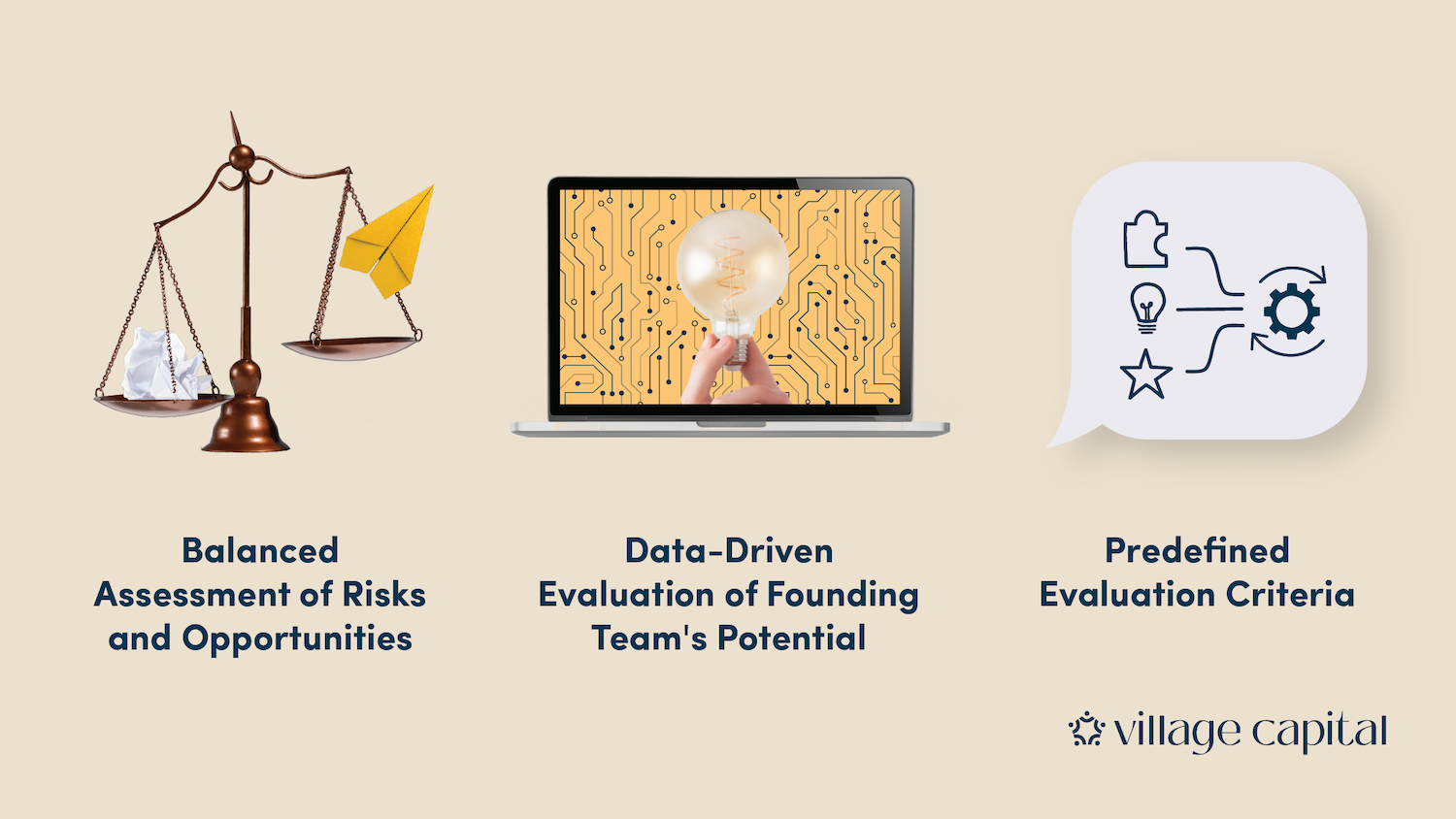
The results were unequivocal. Implementing these steps led to more equitable, consistent and comprehensive assessments. Scores for women-led startups were five times higher in the treatment group compared to the control group.
Evaluation processes also have an impact on those being evaluated beyond funding outcomes. In the experiment, women on gender-diverse founding teams in the treatment group presented their startups to investors more often (instead of being replaced by a male co-founder) after experiencing more equitable evaluation.
The opposite happened in the control group, where women co-founders were more likely to take a step back and allow male colleagues to lead future presentations. This finding suggests that equitable evaluations are also essential due to their impact on moving ventures further along in investor pipelines and their effect on how often women engage in the startup ecosystem.
All together, these findings underscore a pressing need for systemic innovation in investment evaluation. Traditional methods often fail to recognize the potential in women-led startups, inadvertently favoring male-led ventures. Small adjustments like the above ensure fairer evaluations and open more opportunities for women entrepreneurs, ultimately benefiting the entire startup ecosystem. It's a testament to our belief that when women entrepreneurs thrive, the entire startup ecosystem flourishes.
Navigating complexity together: A call for collaboration
The journey of women entrepreneurs in securing capital is a complex one. While Village Capital has taken measures to address these issues, it's clear that more work is needed. A collaborative approach involving the collective efforts of entrepreneurs, investors, and industry stakeholders is essential. The road to achieving true equity in entrepreneurial opportunities is long and requires continuous, concerted, and connected efforts.
Village Capital’s commitment to this journey is unwavering and we welcome others to contribute to and reinforce this shift in mindset. I encourage you to reach out to me with any additional insights. Together, let's inspire and empower others to join us in building an equitable, supportive, and comprehensive environment where women entrepreneurs can truly thrive.
Subaru and Make-A-Wish Create Joyous Memories for Families


One of the recipients of Autobarn Subaru of Countryside's work with Make-A-Wish Illinois, who wished for a bedroom makeover complete with a gaming console to power one of his favorite hobbies. (Image courtesy of Make-A-Wish Illinois)
Children’s greatest wishes are coming true in the Chicago suburbs. From family vacations to bedroom makeovers, Autobarn Subaru of Countryside and Make-A-Wish Illinois are helping to create irreplaceable experiences for critically ill children and their families.
“Over the past eight years that Autobarn has worked with Make-A-Wish, the retailer has granted more than 35 wishes for children in the community,” said Richard Fisher, managing partner of Autobarn, a long-time family business. “We’re very lucky to be involved with Subaru and Make-A-Wish. It makes us feel good, too. We’re a local business, and we care about the community and its businesses.”
“They truly understand that a wish is not just a fleeting moment in time, but a journey that provides hope, strength and joy to children when they need it most,” added Stephanie Eckert, corporate gift officer for Make-A-Wish Illinois. “This is the best promise that Subaru and Autobarn Subaru of Countryside can make to the children in our community – that they will be there to ensure their wish journey will be a magical experience of discovery and joy.”
Subaru of America has partnered with Make-A-Wish for the past 12 years as part of the Subaru Love Promise, the company’s commitment to be a positive force in the communities where employees live and work. It’s the largest automotive donor to the Make-A-Wish Foundation and, together with its retailers, Subaru has donated over $32 million to help grant more than 3,300 wishes nationwide.
Autobarn Subaru of Countryside selected Make-A-Wish as its hometown charity through the annual Subaru Share the Love Event. During the annual charitable initiative, which is held between November and January, Subaru and its participating retailers donate at least $250 to a customer’s chosen national or hometown charity for every new vehicle purchase or lease.
“The Share the Love Event with Subaru is something special,” Fisher said. “Together with Subaru, we don’t just say, we do. Subaru really puts its money where its mouth is. And 12 years later, it’s still going strong. It’s not a one-time thing.”
About three dozen Autobarn Subaru of Countryside employees also participated in the Walk for Wishes fundraiser for Make-A-Wish Illinois, along with a host of movie characters that added to the excitement for younger participants. “Our team wanted to get involved personally,” Fisher said. “It’s a feel-good thing … It makes you realize life is special, and you appreciate it more.”
That involvement means something for the dealer, employer and customer, he added. “You feel a part of something that gives back, which is what employees want. It’s not just writing a check and moving on.”
Wish requests vary widely. “People are different about what they want and love,”
Fisher said. No matter the wish, family reactions are among the most rewarding parts of the program. “Just seeing someone smile — when you see someone who doesn’t have it easy, when you see them able to smile and have a good time, that’s what it comes down to,” Fisher said.
Recipients’ families are celebrated together when the wishes are granted, and after the wishes are fulfilled, families often return to the retailer for a reception.
A trip to her favorite California theme park was one kid’s wish, and they were able to get the support they needed to make it possible. Their daughter uses a wheelchair, has a seizure disorder and a genetic disorder, and is non-verbal. “The family doesn’t have it easy,” Fisher said. “But just to see the family be able to take a break and have a vacation, just seeing the dad and mom sharing such a loving interaction with their daughter [was gratifying].”
One boy wished for his whole bedroom to be remodeled with a new bed, TV monitors and a game console. “If you are 12, that’s your dream to have all the cool stuff,” he said.
“The Autobarn Subaru of Countryside, its owners, employees, and customers truly ‘share the love’ and embrace the power of wish, not just during the holiday season, but throughout the whole year,” the Make-A-Wish Illinois representative said. “We could not be more grateful for the support.”
The team at Autobarn Subaru of Countryside also supports other causes locally. They donate blankets, hats and gloves to local shelters, supports local public schools through volunteering and other projects, and work with the local humane society by sponsoring an adoption event to help dogs find forever homes, during which the retailer covers adoption fees.
“We try to help any way we can,” Fisher said. “We try and stay as involved as we can. We do it because it’s the right thing to do.”
Fisher encouraged people and corporations to pitch in where they live, too. “I always tell more people to get involved — it’s the most rewarding thing you can do. If you have the means to do so, you should. We’re very focused on what we can do, and whatever it takes to make people happy. If we hadn’t gotten involved, we might not have been able to share in their joy.”
This article series is sponsored by Subaru of America and produced by the TriplePundit editorial team.
Greenhouses Can Produce Crops and Energy With New Solar Film
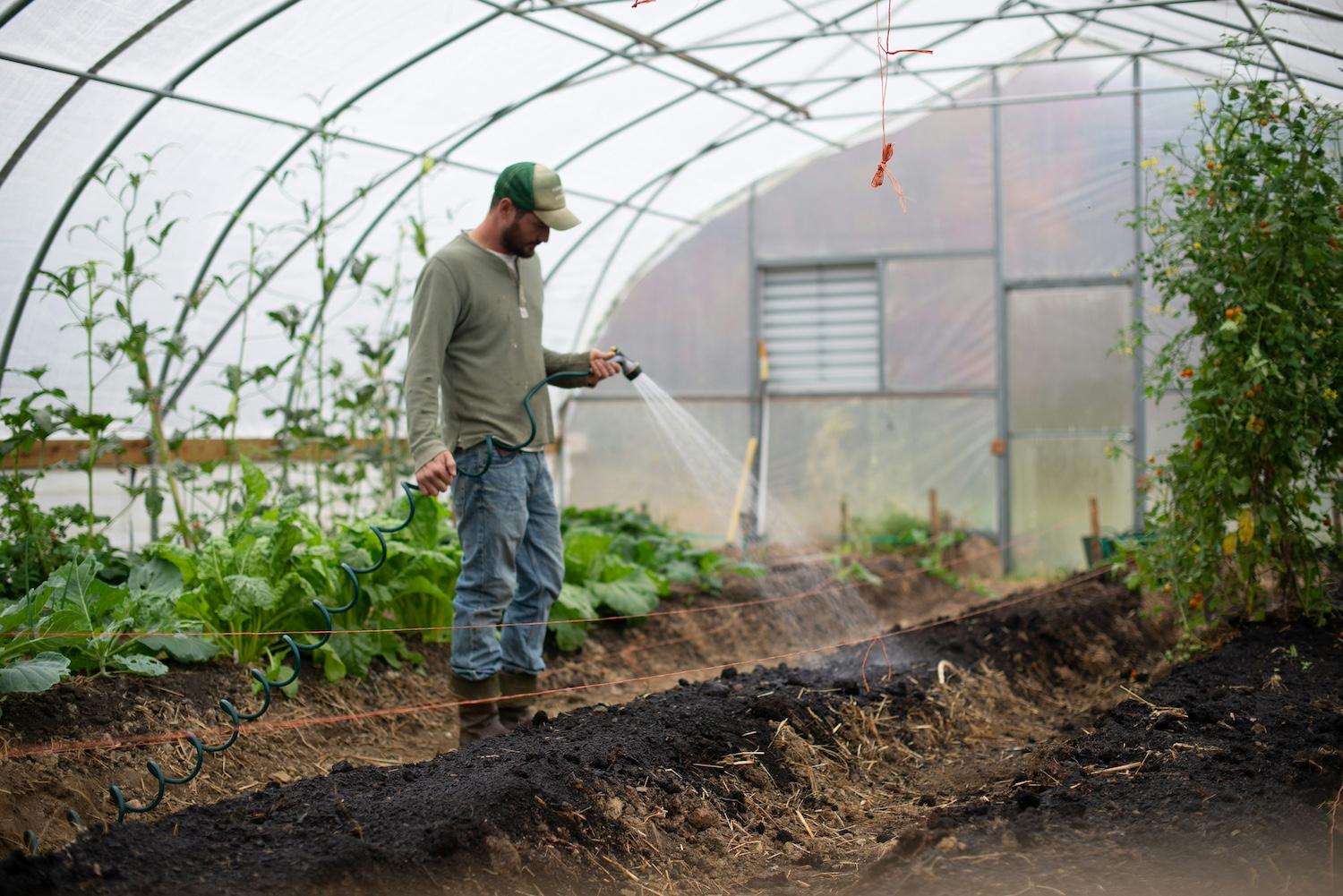

(Image: Zoe Schaeffer/Unsplash)
A new kind of solar film makes it possible for farmers to generate energy with their greenhouses while still allowing enough light to reach their plants for photosynthesis.
The film, developed by the manufacturer 3M and the Swiss technology company Voltiris, can help greenhouse farmers reduce energy costs and carbon emissions while boosting crop yields, which could advance the development of more sustainable food systems.
“It’s a way to produce energy in a space where it was not possible before,” Nicholas Weber, co-founder and CEO of Voltiris, told TriplePundit.
Generating solar energy this way is possible now thanks to a spectral filtering process. Light travels at different wavelengths, and the film uses spectral filtering to allow certain wavelengths of light to pass through to the plants while absorbing other wavelengths to use to produce energy.
Initially, the companies received a lot of questions about the economic impact of spectral filtering, Weber said.
“That’s something that we had to clarify, and we had to work with growers and with research centers to validate the fact that we didn’t have any negative impact on crop yield,” Weber said. “But the other part of the equation that’s also what makes us special — and why the partnership with 3M is valuable — is that we managed to crack the equation of also producing energy efficiently.”
Greenhouses can be used to extend the growing season of a wide variety of fruits, vegetables and herbs, or cultivate them year-round. But keeping the ideal plant-growing environment in the greenhouse requires controlling things like the lighting, temperature and moisture levels, which can be energy-intensive. Tomatoes, for example, grow best at a temperature of around 70 to 75 degrees Fahrenheit, leading to increased energy consumption when growing them in cooler months.
If the energy used for the greenhouse comes from fossil fuels, increased consumption means producing more greenhouse gases and raising energy bills. Having a way to generate and use renewable energy instead, like solar film, can reduce those impacts.
A 10-acre greenhouse, which is relatively small by commercial standards, can use up to $2 million in electricity a year for artificial lighting and HVAC, said John Morrow, insights lead of corporate research and development at 3M.
“With the Voltiris [film], they can dramatically reduce their need for electricity coming in, and basically produce the majority of the electricity they need,” Morrow said. “I think our solution is the gateway toward the electrification of the greenhouses that will be a clean and stable supply of energy.”
Retrofitting greenhouses with solar film also has the potential to advance agrivoltaics, the practice of using the same plot of land for agriculture and solar energy generation. Agrivoltaics is often cited as a way to address concerns about land use in solar energy development, an important factor when up to 40 percent of the United States’ electricity could come from solar power by 2035.
In the European Union, installing agrivoltaic systems on 1 percent of agricultural land would help surpass 2030 solar energy goals, according to a report by the European Commission’s Joint Research Center.
Voltiris and 3M demonstrated that their solar film works from both the economical and energy generation standpoints, Weber said.
“Now, we’re in the last phase of our demonstration,” Weber said. “We’re scaling up the size of the projects that we’re doing. To some extent, we could already be doing some small-to medium-sized projects, but our ambition is to really leverage all the greenhouses that are available.”
New Fund Aims to Scale Packaging Reuse and Refill Systems Around the World


Attendees at the Subsonic Music Festival in Sydney, Australia, purchase drinks in reusable cups. Reuse and refill systems like these can cut plastic waste dramatically over the next 20 years, according to the U.N. (Image: Turn Systems/Unsplash)
This story is part of a solutions journalism series focused on reuse and refill systems, how they're used around the world, and what's holding them back from scaling further. Follow along with the series here.
As the world chokes on plastic waste, the statistics are so dizzying that many of us have grown numb to them. At least 14 million tons of plastic are washed into the world's oceans every year. That's equivalent to more than 280 billion beverage bottles. These plastics break down into smaller and smaller pieces when exposed to the sun, and the resulting microplastics have been found from the top of Mount Everest to the ocean floor — not to mention in human blood, and more recently within clogged arteries.
If that's not bad enough, it's projected to get worse, with global plastic consumption set to double by 2040 as convenient but wasteful single-use systems expand to the growing global middle class, according to a 2023 analysis from the U.N. Environment Program.
Ready for some good news? We already know how to solve the problem — we just need to put it into action — and a newly announced prototype fund can help.
Reuse and refill systems could cut plastic waste by nearly half
The U.N. Environment Program ran scenarios for halving global plastic waste while reducing plastic litter in oceans and the environment by 80 percent. Most of the plastic reduction needed to reach that target could be achieved by reuse, refill and new delivery models, according to the research.
Before the explosion of single-use plastic in the 1970s, most people purchased their household staples and met their daily needs without packaging. We already know how to send bottles back with the milkman or restock our pantry from the bulk bins at our local corner store. But as it became easier to purchase everything in neat, individual packages, the reuse and refill systems we once depended on fell by the wayside.
As the chickens of our single-use plastic habit come home to roost, the global community is challenged to rebuild those forgotten systems and rethink them for the modern age.
Dozens if not hundreds of startups around the world are taking up the task, with refill systems for groceries, beverages, restaurant takeout, personal care products and more. But it takes significant upfront investment to build the infrastructure necessary to process containers for refill, not to mention the cultural momentum needed to woo people away from single-use, so these ventures often struggle to get out of the starting gate.
The plastic action group Repurpose Global is looking to help more early-stage reuse and refill ventures reach the next level. The Reuse Outcomes Fund, announced last month, will support promising startups in the U.S., Canada and India, leveraging lessons the nonprofit learned from scaling waste management infrastructure across the Global South.
The Reuse Outcomes Fund channels lessons from waste management to help reuse and refill scale up
"Billions of people don't have access to basic municipal waste management and collection services," said Peter Wang Hjemdahl, chief innovation officer and co-founder of Repurpose Global. "If there's no waste collection, there's no recycling, and there is no circular economy at the end of the day."
Repurpose Global uses a model called outcomes-based financing to fund projects that expand waste management systems and capture plastic waste before it can reach the environment. Rather than seeking a financial return, these investments aim to achieve a specific, verifiable environmental or social outcome — in this case, waste that is collected and processed for recycling rather than becoming litter.
The model helped Repurpose Global bring waste management services to more than 600,000 people over the past six years, while recovering over 50 million pounds of plastic waste across the U.S., India, Indonesia, Kenya, Ghana, Colombia and the Dominican Republic.
Like waste management services in underserved areas, fledgling reuse and refill systems face challenges with high upfront cost, limited financing options, and a dearth of best practices that can guide replication of these systems from one place to another. These similarities came to light as Repurpose Global's team connected with more startups as a co-convener of the Innovation Alliance for a Global Plastics Treaty, which pushes for refill companies and other plastic economy innovators to have a more prominent voice in global plastics policy.
"A lot of the issues we saw in waste management in the Global South are applicable in the very early, nascent stages of trying to scale reuse and refill solutions," Hjemdahl said. "We see the same challenges, and we are confident about our track record. We felt that now is the right time to make a concrete commitment."
A three-year investment that could come with big payoff
The Reuse Outcomes Fund will operate over the next three years — first securing partnerships with promising reuse and refill startups, then helping them build capacity and launch new pilot projects, and finally scaling those projects and creating a framework to replicate them elsewhere.
Set to be announced at the end of this year, the first cohort of startups will collectively receive $1 million in funding from Repurpose Global, as well as technical training and capacity-building from the Repurpose team. As part of the outcomes-based financing model, the nonprofit will also build systems that allow for the verification of plastic waste avoided by implementing reuse and refill, as well as a knowledge repository that documents best practices to aid the replication of successful systems.
"Ultimately, we have to define what a 'reuse outcome' is and what a 'refill outcome' is," Hjemdahl said. "It sort of makes logical sense, right? We can avoid a tonnage of plastic waste that would've otherwise not been avoided without the presence of the financing. But the devil is in the details, so we have to work with the sector — not just by ourselves, but work with nonprofits and other leaders in order to actually define these things."
The fund will focus on startups working in three priority areas: refill stations for water bottles and other beverages, reverse logistics models for food and grocery delivery, and returnable packaging systems for e-commerce and physical retailers. These systems are the closest to consumers' daily lives and as such have the potential to eliminate high volumes of plastic waste.
"It's really important that basic amenities like food, water and groceries can reach people in a way that does not require packaging," said Svetlana Dcosta, senior manager of strategic partnerships for Repurpose Global, who developed the Reuse Outcomes Fund alongside Hjemdahl. "For groceries, food deliveries, even your personal care products, oftentimes consumers feel guilty that they come in so much plastic packaging. Enabling and financing these systems allow them to go to a store and refill or call in for a refill when they run out of their staples."
While a $1 million fund may sound like a drop in the bucket compared to the scale of the world's plastic waste problem, effectively expanding reuse and refill holds promise for outsized impact. For example, every 10 percent increase in refillable bottle use across coastal countries could yield a 22 percent reduction in plastic bottle pollution in the world's oceans, according to the nonprofit Oceana.
The fund's focus on documenting best practices for the purpose of replication could also help systems proven through the pilot phase to reach new markets faster and begin to eliminate waste.
"Our thinking here is: Let's come in with an anchor commitment. Let's come in with our expertise, and let's hope to use this fund — which is meant to be a prototype fund — to garner more interest and more work around this," Hjemdahl said. "The initiative here is really a continuation of our mission from day one, which is to bring different folks across the entire ecosystem together to create change against plastic pollution."
Clean Technology Investment Continues to Set Records, Despite Some Blips


(Image: Nicholas Doherty/Unsplash)
The clean technology investment picture seemed mixed last fall in the United States. High-profile setbacks in the U.S. wind industry and lower-than-expected electric vehicle sales both colored the headlines. Partisan political efforts to obstruct clean tech investments also dampened the mood. But after the dust settled, it's clear these were minor hitches in an otherwise strong year for clean tech investment.
Another record-setting year for clean tech investment
The 2022 Inflation Reduction Act is widely credited with spurring clean technology investment in the U.S., including renewable energy and electric vehicles, as well as heat pumps and other retail products.
In the clean energy space alone, the economic and environmental advocacy organization E2 tracked at least 292 major projects in 41 states and Puerto Rico since the Inflation Reduction Act passed in August of 2022, totaling almost $118 billion in capital investment.
Last month, the independent research firm Rhodium Group reported similar signs of growth in its 2023 Clean Investment Monitor. The tracking platform shows a strong, record-setting performance compared to 2022.
“Clean energy and transportation investment in the U.S. set another record in Q4 of 2023, reaching $67 billion — a 40 percent increase from the same period in 2022,” according to Rhodium.
The Q4 results represented a strong finish for 2023, beating the average among all four quarters compared to the previous year. “Looking at the full year of 2023, clean investment came in at $239 billion, up 38 percent from 2022,” Rhodium added.
Electric vehicle sales were not so bad after all in 2023
As for the bad years, 2023 did seem to end on a low note for electric vehicle (EV) sales after Ford and GM announced they were cutting back their production schedules. The gloomy outlook trickled into media reports this year.
“There are signs that demand for EVs appears to be slowing and may not be quite as intense as either automakers or the Biden administration had expected,” PBS reported in January. Though the outlet also noted that 2023 was “a record for electric vehicles in the U.S., with more than 1.2 million sold. That was 50 percent higher than in 2022.”
Fifty percent growth does not seem like a slowdown of any sort. Some industry observers suggest that Ford and GM simply overshot their demand estimates. In other words, the “slowdown” is more a matter of internal book-keeping than an actual measurement of the pace of consumer interest in electric vehicles.
The slowdown, such as it was, could also reflect broader trends in auto sales. A more accurate measurement of consumer interest in EVs would be a comparison of EV sales growth with other vehicles. For example, last fall Cox Automotive assessed that overall new vehicle sales were projected to grow by only about 10 percent in 2023 compared to 2022.
In that context, EV sales are not slowing down at all. “EV sales are increasing faster than any other segment in the industry,” Michelle Krebs, a Cox Automotive executive auto analyst, told Inside Climate News last month.
To the extent that cost impacts sales, it’s also worth noting that the EV market is weighted in favor of SUVs and other larger, more expensive vehicles. In the coming years, automakers will offer a wider range of models and price points, potentially boosting sales with more affordable choices.
Wind power is making a comeback
The wind industry also suffered through some negative media attention in 2023, though in terms of clean energy investment, there was an actual downturn.
In fact, compared to the overall record of clean investment in 2023, the U.S. wind industry sticks out like a sore thumb. Wind investment declined 37 percent in 2023 compared to 2022, landing down at just $9 billion last year, according to Rhodium.
Onshore wind installations totaled only 7 gigawatts in 2023, according to the research organization BloombergNEF. That was a significant drop from the peak year of 2020 when installations totaled 17 gigawatts.
Nevertheless, signs of a better 2024 emerged in the form of “repowering” projects that replace aging wind turbines with new, more efficient models. With an assist from new tax credits, repowering provides the wind industry with an opportunity to grow despite the rising opposition to new wind farms.
Repowering projects alone will add an estimated 6.5 to 7.5 gigawatts to the grid in 2024, Scott Wilmot, vice president of power and renewables intelligence for Enverus Intelligence Research, told Utility Dive. New wind farms will likely add about the same amount.
As for offshore wind, 2023 was a disappointing year marked by a weak showing for new lease offerings in the Gulf of Mexico and the cancellation of two offshore wind farms in New Jersey.
Still, Bloomberg is among those spotting signs that offshore wind developers are beginning to sort through the same challenges that impeded onshore growth last year, including “supply-chain kinks,” inflation and higher borrowing costs.
“Prospects are improving thanks to new tax credits and stronger demand,” Bloomberg reporters Josh Saul and Priscila Azevedo Rocha wrote.
Solving the heat pump problem
Wind power was not the only underperforming area of clean tech investment in 2023. Retail heat pump investments declined 16 percent in 2023 compared to 2022, according to Rhodium.
This is troubling news, considering that electric heat pumps were identified as a key pathway for decarbonizing heating, ventilation and cooling (HVAC) systems that otherwise run on gas, propane or heating oil.
On a brighter note, Rhodium also points out that heat pumps gained market share in the residential construction market in 2023. That could help stimulate investor interest in the future.
One obstacle to faster investment growth in the heat pump field is the cost of installation. In February, the U.S. Department of Energy’s National Renewable Energy Laboratory issued a report indicating that tax credits and rebates in the Inflation Reduction Act will help resolve the cost issue for many households, but not for others.
“Millions of U.S. households would benefit from heat pumps, but the cost of installing the technology needs to come down to make their use a more attractive proposition,” according to the report.
The report also suggests that installation costs are high in part because inexperienced installers are offsetting additional expenses related to working with unfamiliar equipment and processes. To address that obstacle, the Energy Department began funding heat pump installation training programs. Efforts to diversify the clean tech workforce could also help accelerate the pace of installer know-how.
The last word on clean tech investment
All in all, the 2023 results demonstrate that the clean tech field is a wide-ranging and diverse one. If obstacles arise in some areas, investors have many opportunities in others. In fact, the conventional clean tech investments of today — wind, solar, EVs and heat pumps — are beginning to be overshadowed by new opportunities.
There was a significant increase in emerging clean tech fields drawing investment in 2023, including clean hydrogen, sustainable aviation fuels and carbon capture, according to Rhodium.
“The fastest investment growth last year occurred in the deployment of emerging climate technologies — up ten-fold from $0.9 billion in 2022 to $9.1 billion in 2023 — and in the manufacturing of clean technology, up 153 percent from $19 billion in 2022 to $49 billion in 2023,” according to Rhodium.
Partisan public officials in about two dozen states spent considerable time and energy attempting to obstruct clean energy investment. Despite their attempts to leverage their legislative and legal authority, the numbers don’t lie. Clean investment has nowhere to go but up.
How 1,200 Refugees in Ethiopia Are Becoming Business Owners
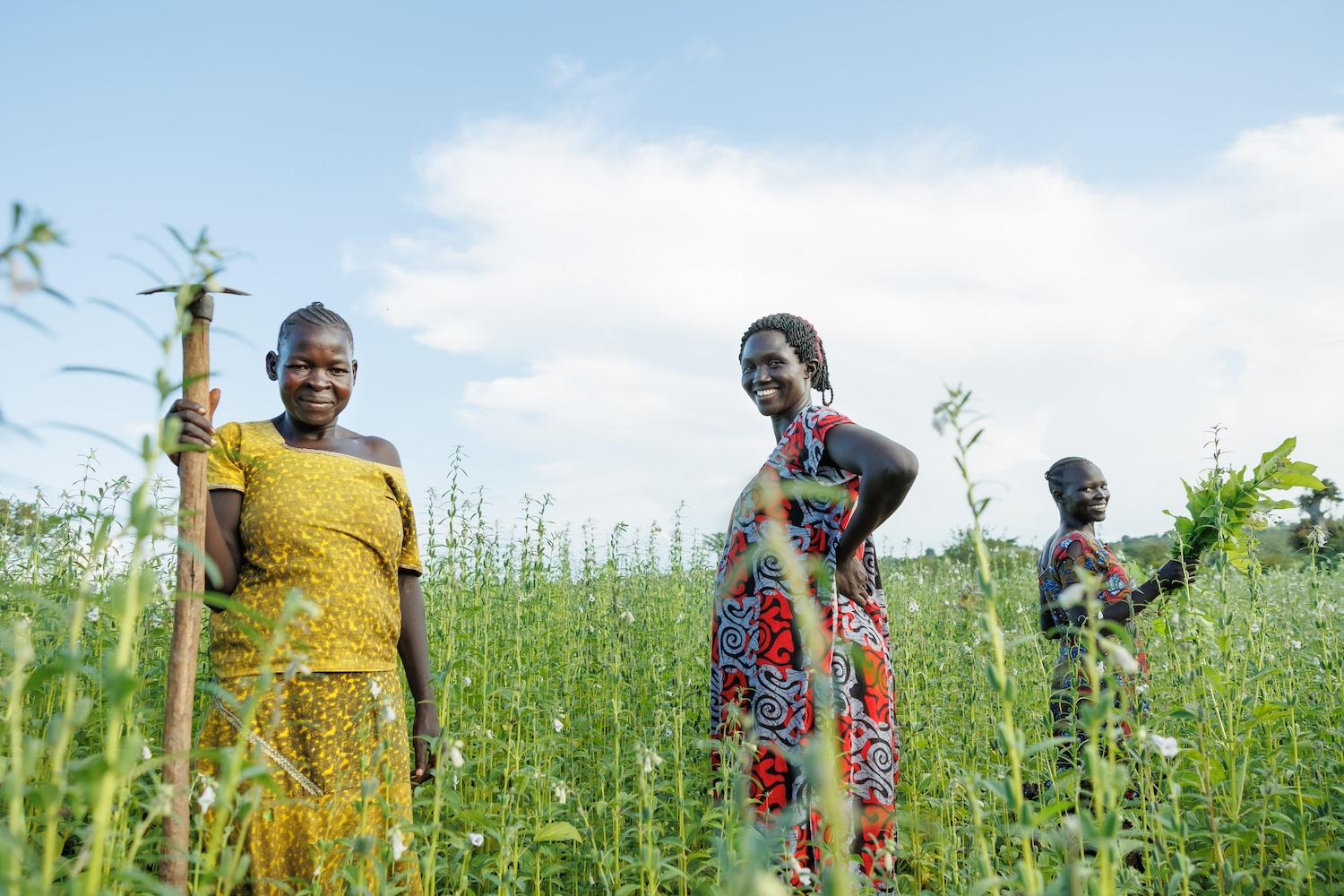
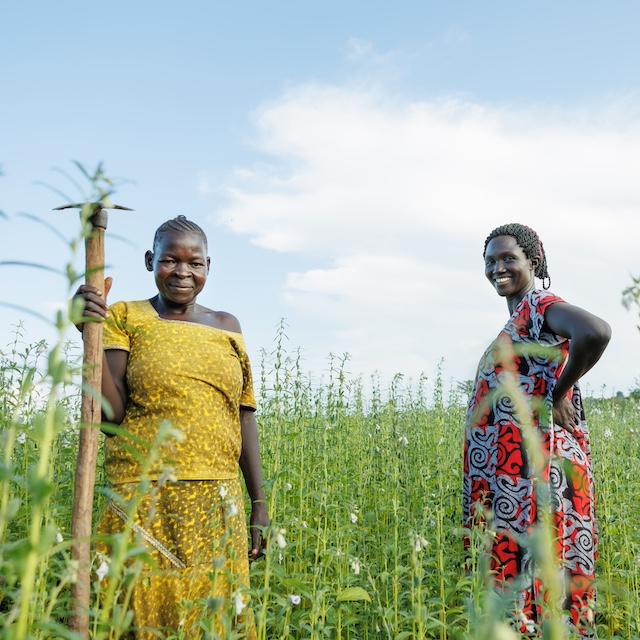
Three entrepreneurs who are a part of the Delivering Resilient Enterprises and Market Systems program in Uganda. (Image: Jjumba Martin for Mercy Corps)
After helping thousands of refugees in Uganda start businesses through microfinancing and entrepreneurship training, the Delivering Resilient Enterprises and Market Systems (DREAMS) program is expanding to Ethiopia, the country with the second-largest refugee population in Africa.
The DREAMS program is expected to provide $500 in seed funding and business training to an initial group of 1,200 people in Ethiopia, many of whom fled the civil war in Somalia. It’s a collaboration between the nonprofit Village Enterprise and the non-governmental humanitarian aid organization Mercy Corps.
“With refugee numbers at record levels, as well as increases in food prices and decreases in aid budgets, it’s more important than ever that we are providing sustainable solutions and equipping refugees with the training, resources, and markets to become self-reliant,” Dianne Calvi, CEO and president of Village Enterprise, said in a statement about the program's expansion.
Participants in the program take workshops and training sessions facilitated by Village Enterprise to acquire skills in initiating, promoting and growing a business. Then, Mercy Corps identifies lucrative prospects and enables connections with local markets to help the new entrepreneurs optimize their operations and scale their enterprises.
Village Enterprise recently completed a multi-year study of entrepreneurs who participated the organization's programs in Uganda and Kenya. Those entrepreneurs experienced an 83 percent increase in income and more than a 900 percent increase in savings on average after starting the program, Calvi told TriplePundit. Five years later, more than two-thirds of the businesses are still running.
The training is organized into two groups, Winnie Auma, chief program officer for Village Enterprise, told 3p. The first is dedicated to business skills training on topics like how to manage money, use business records to make decisions, and develop, diversify and expand a business. The second focuses on technical skills training provided by private-sector volunteers that is specific to the different value chains established in Uganda and Ethiopia.
“Something very important about our training is that the content was built with behavioral science practices around it,” Auma said. “Goal-setting is a critical part of what gets covered as part of our training and mentoring curriculum. For example, we would use videos from previous Village Enterprise entrepreneurs to inspire model behavior around these communities.”

Another key element to the program’s success is that the business mentors are refugees themselves, Calvi said. They come from the same countries, share the same cultures, and speak the same languages as the participants.
“When they’re delivering the program, they understand the challenges,” Calvi said. “They understand the cultural background of the people they're working with. That ensures high-quality training, but it also ensures that we are moving people along in terms of their well-being as well as increasing their income, savings and assets.”
The program doesn’t just benefit the entrepreneurs. It engages with local leaders and the whole community, Auma said.
“We actually encourage all of the household members to participate in our training whenever possible,” Auma said. “We do community dialogues. We actually seek the consent of the households to make sure that they’re in agreement in terms of who gets to participate in this program.”
Salome Chandra was one of the first participants in the DREAMS program for refugees. Chandra is a mother who arrived in Uganda with six children after escaping the conflict in South Sudan in 2016. When she arrived, all she had were the clothes on her back, a bag of rice, a bottle of oil, and a small jug of water, Calvi said.
“She introduced herself to me as a mother of seven and explained that one had already passed away,” Calvi said. “When I asked her about her husband, she said that she didn’t know where he was or if he was even still alive. She was forced to flee her home in Juba, South Sudan, when war broke out and had to walk for two months with her six children, ages 1 through 12, carrying her youngest on her back.”
Chandra had just completed the DREAMS program training when Calvi met her. “She was excited to be starting her retail business selling meat,” Calvi said. “She spoke enthusiastically about all that she had learned in the training and how no one could take that away from her.”
Now, Chandra is a successful businesswoman and a leader in the refugee camp. Her kids are all attending school. And despite the fact that she hasn’t been able to return home, she feels hopeful for her future, Calvi said.
“[She] was the victim of a broken system,” Calvi said. “Five years later, she owns two acres of land. She is a successful businesswoman running both a retail and agriculture business. She provides not only for her six children, but also five other children who have lost their parents.”
Editor's note: This story was updated on March 12 to clarify that Village Enterprise's multi-year outcomes study includes program participants in both Uganda and Kenya.
Living a Sustainable Life Doesn’t Have to be Expensive
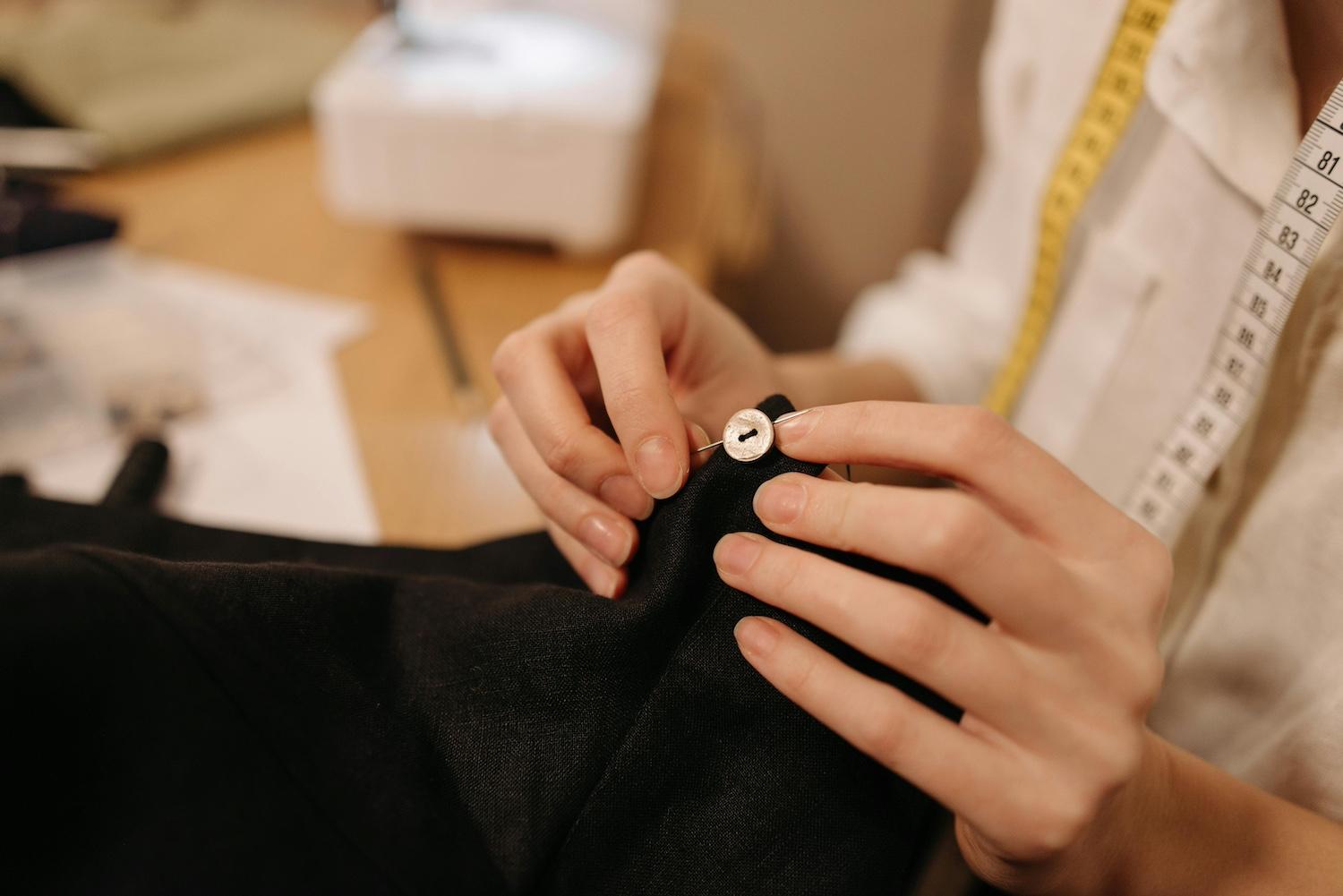
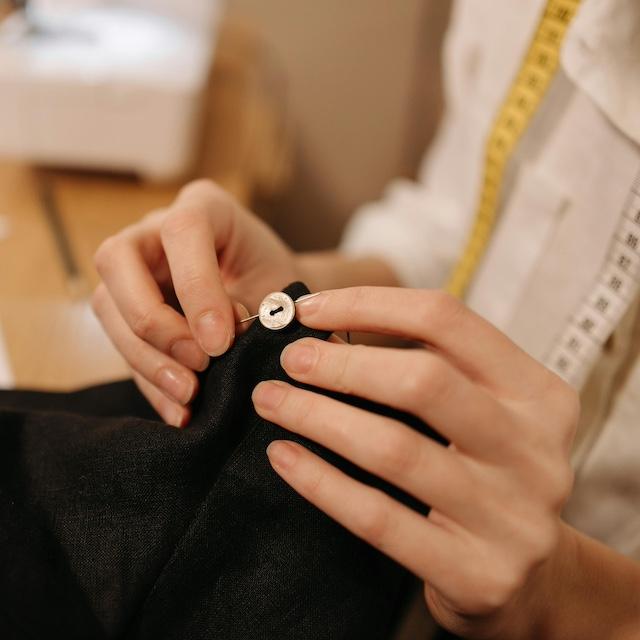
(Image: Pavel Danilyuk/Pexels)
A sustainable lifestyle is often lamented as too expensive, and thus unrealistic, for the average person. In truth, sustainable living can be more affordable than established norms. But it requires changing our mindset and doing more with less.
Though consumers say they are highly concerned about climate change and want to live more sustainably, the increasing cost of living has led 41 percent of global consumers to say higher prices are the top barrier to purchasing more sustainable products, according to the consumer insight company Euromonitor International.
Still, rising prices inadvertently made the general public more sustainable as people consumed less. Not only are more consumers seeking out secondhand clothing and repairing items, they’re also using less water and energy, and wasting less food, according to Euromonitor. All of these are more sustainable and affordable choices.
Items marketed as "sustainable" often do come with higher prices. Instead of buying a bunch of sustainable-labeled stuff, we can center our attention on using what we have for as long as possible, choosing quality over quantity, and eliminating waste to the best of our ability. This is true for clothing, food, transportation, and everywhere else that we use resources and contribute to carbon emissions. While some products are more sustainable than others, sustainability itself is a lot more than green-labeled, feel-good products.
Make a difference with what you wear
The fashion industry and seasonal trends play a huge role in increased waste, carbon emissions and overconsumption. The advent of fast fashion has an undeniable impact, with 60 percent more garments purchased per capita now versus 15 years ago. While fast fashion brands have exacerbated the problem by producing an excess of trendy clothing that’s often only worn once, the underlying issue can be traced back to stuffed closets and styles that expire after a couple of seasons, which were part of the fashion industry since long before the word fast was attached.
It’s indisputable that humans owned fewer garments and wore them longer when we had to make our own. While no one is saying that you have to learn to sew, an old-fashioned approach to clothing is a legitimate path to sustainability. Instead of a new outfit for every day of the month, focus on quality pieces that can be mixed and matched and worn or traded until the end of their (much longer) lifespan.
Instead of cheap synthetics that shed microfibers into water and food systems, look for high-quality clothing made from sustainable fabrics like organic cotton, bamboo and hemp, for example. Bamboo and hemp in particular require very little water to grow, and they fix carbon into the soil. Additionally, new, innovative materials are appearing on the market like mushroom leathers and biodegradable wood pulp-based fabric.
While clothing made from natural fibers will cost more, by focusing on quality over quantity, you will save money with a sustainable wardrobe in the end. Doing so does require a change in mindset, especially when we feel pressured to stay on top of every trend and never wear the same outfit twice. Perhaps it’s time to use that peer pressure to the planet’s advantage and fawn over repeat pieces as they reappear in the office instead.
Achieve sustainability by eliminating food waste
Food waste is a huge barrier to sustainability, both on a societal level and for individual households. Anywhere from 30 to 40 percent of all food in the U.S. ends up in landfills or as compost. While much of this can be attributed to pre-consumer waste, the average American household wastes roughly three pounds of food every week — resulting in substantial carbon emissions and water waste, as well as the unnecessary use of fertilizers and pesticides. At a cost of roughly $1,500 per year, the average household could save a good amount of money and live more sustainably just by eliminating food waste.
These recuperated funds could also be used to purchase sustainably labeled foods, but labels aren’t everything. Eating local, seasonal produce is more sustainable than buying something organic that was shipped halfway across the world. Additionally, eating less meat and consuming fewer processed products goes a long way toward sustainability.
Better ways to get there
Electric vehicles (EVs) are the wave of the future, but are they always the sustainable choice? Producing any new vehicle, whether it is gas-powered or electric, creates an enormous amount of carbon. And the less you drive, the less sustainable it is to purchase a new EV, or any new car for that matter. We rarely give proper credence to more sustainable ways of getting around: taking public transportation, carpooling, bikes, mopeds, motorcycles, or using our own two feet, all of which are cheaper.
Of course, depending on where you live and work, these may not be realistic options. Unfortunately, most U.S. cities are designed in a way that almost forces the use of personal cars and trucks. But if living sustainably is your goal, it’s worth looking for solutions where you can and accepting mild inconveniences for the greater good when possible.
If you have to commute long distances or have other needs that require a lot of driving, it may make sense to buy an EV and ensure it lasts as long as possible. However, upgrading every few years is not a sustainable choice, regardless of what type of vehicle it is. This will not only save on carbon emissions, but it’ll save a lot of money.
Make sustainable living the norm
By using and wasting fewer resources in every aspect of our lives, we can make sustainability the norm while saving money — eventually leading to the whole becoming more than the sum of its parts. It won’t look the same for everyone, but doing so requires a commitment to giving up consumerism in favor of minimalism and making what we have last. Eventually, these choices will impact the larger system and force change at scale.
Can you live 100 percent sustainably? Probably not. Doing so would likely require opting out of modern society and living off-grid. One way or another, we have to produce and consume — through the work we do, the food we eat, the commutes we make, the leisure we take, the places we live and so much more. But that’s precisely why we should focus our efforts on the areas where we can make the biggest difference.
This story is part of Money Month in TriplePundit's 2024 Sustainable Living Challenge. Learn more and take the challenge here.